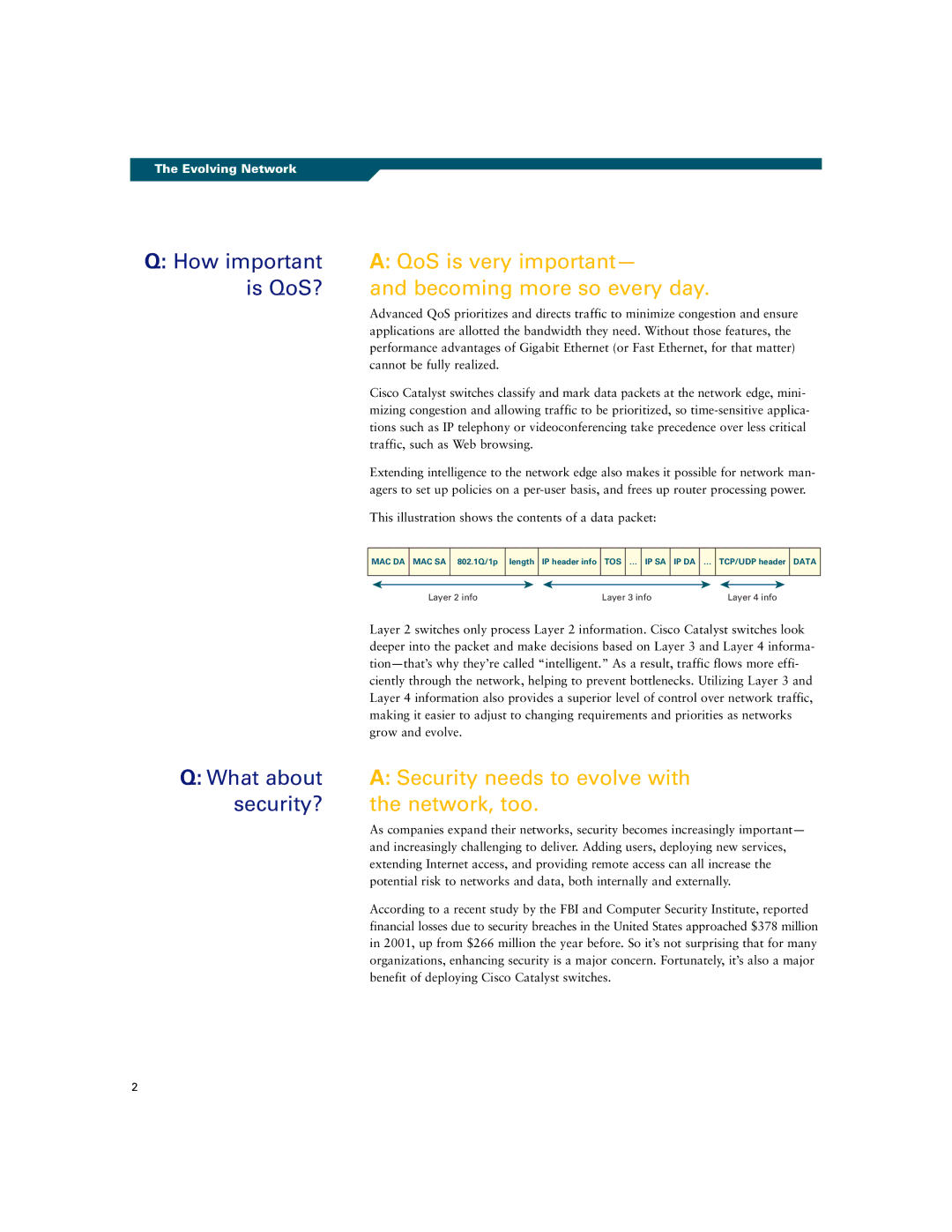
The Evolving Network
Q:How important A: QoS is very important—
is QoS? | and becoming more so every day. |
| Advanced QoS prioritizes and directs traffic to minimize congestion and ensure |
| applications are allotted the bandwidth they need. Without those features, the |
| performance advantages of Gigabit Ethernet (or Fast Ethernet, for that matter) |
| cannot be fully realized. |
| Cisco Catalyst switches classify and mark data packets at the network edge, mini- |
| mizing congestion and allowing traffic to be prioritized, so |
| tions such as IP telephony or videoconferencing take precedence over less critical |
| traffic, such as Web browsing. |
| Extending intelligence to the network edge also makes it possible for network man- |
| agers to set up policies on a |
| This illustration shows the contents of a data packet: |
MAC DA MAC SA
802.1Q/1p
length IP header info
TOS … IP SA IP DA … TCP/UDP header DATA
Layer 2 info | Layer 3 info | Layer 4 info |
Layer 2 switches only process Layer 2 information. Cisco Catalyst switches look deeper into the packet and make decisions based on Layer 3 and Layer 4 informa- tion
Q:What about A: Security needs to evolve with
security? | the network, too. |
| As companies expand their networks, security becomes increasingly important — |
| and increasingly challenging to deliver. Adding users, deploying new services, |
| extending Internet access, and providing remote access can all increase the |
| potential risk to networks and data, both internally and externally. |
| According to a recent study by the FBI and Computer Security Institute, reported |
| financial losses due to security breaches in the United States approached $378 million |
| in 2001, up from $266 million the year before. So it’s not surprising that for many |
| organizations, enhancing security is a major concern. Fortunately, it’s also a major |
| benefit of deploying Cisco Catalyst switches. |
2
